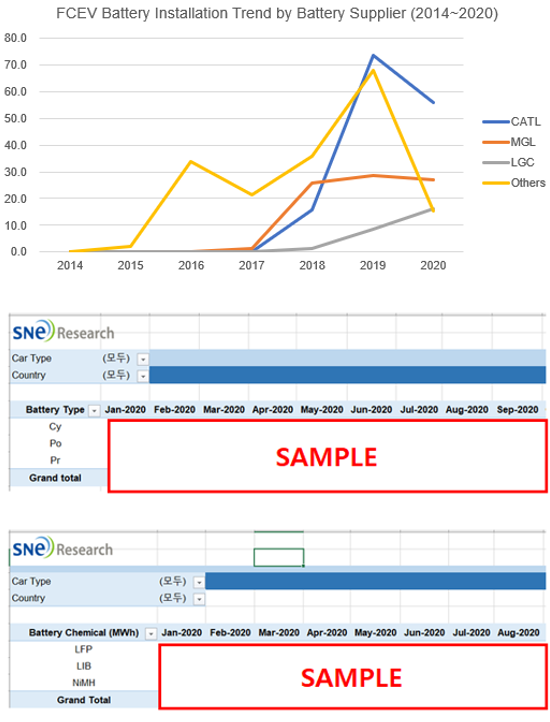PUBLISHER: SNE Research | PRODUCT CODE: 1004700

PUBLISHER: SNE Research | PRODUCT CODE: 1004700
Global FCEV Monthly Tracker
- The world's unique DB computed on the sales performance of monthly global hydrogen fuel cell vehicle batteries and stacks
- Provides market analysis reports and analysis tools based on the sales DB of a total of more than 130 hydrogen fuel cell vehicle models and batteries in 23 countries around the world
Major countries around the world have announced major policies to reduce carbon dioxide according to climate changes. One of the key points of the policies was reducing internal combustion engine vehicles through the introduction of eco-friendly vehicles. With the global policy trend and the efforts of automakers to meet this trend, the full-scale electric vehicle (EV) market has begun to open up.
However, in addition to the hybrid electric vehicle (HEV), plug-in hybrid electric vehicle (PHEV), and pure battery electric vehicle (BEV), which are actively becoming popular, there is another electric vehicle whose market has just started to open. It is the hydrogen fuel cell electric vehicle (FCEV) that focuses on energy storage through hydrogen fuel cells.
In the FCEV, the initial market growth relatively appears slow due to the safety aspect that hydrogen must be safely protected, the technical difficulty of the stack, and the infrastructure issues.
However, FCEV has advantages for which automakers will become interested in developing in many ways. First, it can secure longer mileage than the existing BEV. Second, its charging speed is faster than BEVs. Hyundai's Nexo, which is commercialized at present and is a mass-produced FCEV, can be charged just in 5 minutes. Although the market growth may be slower than that of existing EVs, it is expected to grow rapidly in the future, centered on the commercial vehicle (CV) market intended for long-distance transportation.
In this report, we analyzed by month the sales volume of FCEVs sold worldwide, stacks which are internal core parts, and battery sales volume trends. By analyzing FCEV sales by Fuel Cell Stack system suppliers as well as by region, by FCEV manufacturer, by model, it is possible to see market share of Stack system suppliers. It is also possible to understand at a glance by month battery suppliers' battery installation equipped to FCEV.
Research Scope
- Targeted continents and countries for global FCEV sales: a total of 23 countries in 7 continents around the world,
- Global FCEV manufacturer: A total of 35 FCEV manufacturers
- Global Fuel Cell Stack system supplier : A total 11 system suppliers
- Global FCEV battery suppliers: A total of 24 battery companies
Contents
- Global FCEV Sales : by vehicle type, by country, by continent, by OEM, by model, by Fuel Cell Stack system supplier
- Global Fuel Cell Stack unit (kw) : by model
- Global Battery Installation for FCEV : by battery supplier, by battery type, by battery chemical
Provision Method
- Excel pivot table report: Available for various database analyses
- Provides the previous month(n) results on last working day of following month or beginning of the month(n+2)
Substance
1. Monthly Sales Trend of FCEV - Type, Country, Continents, Group, Maker(OEM), Model, Fuel Cell Stack supplier
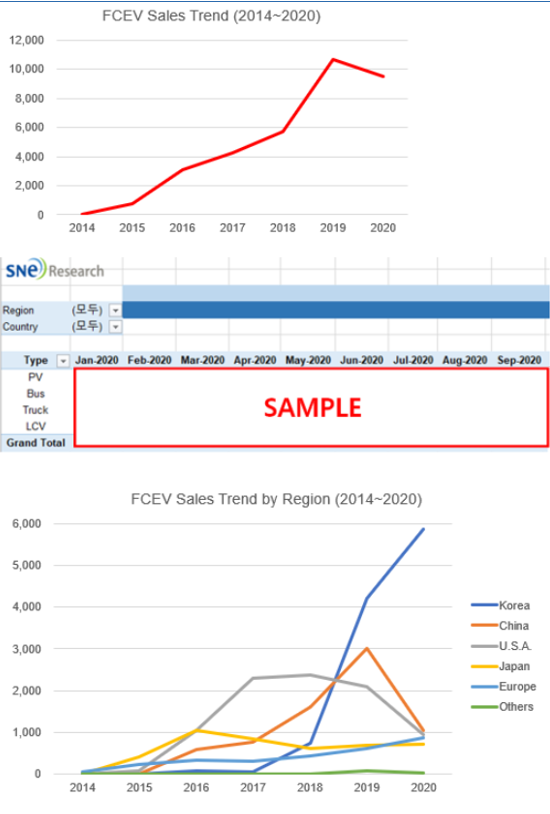
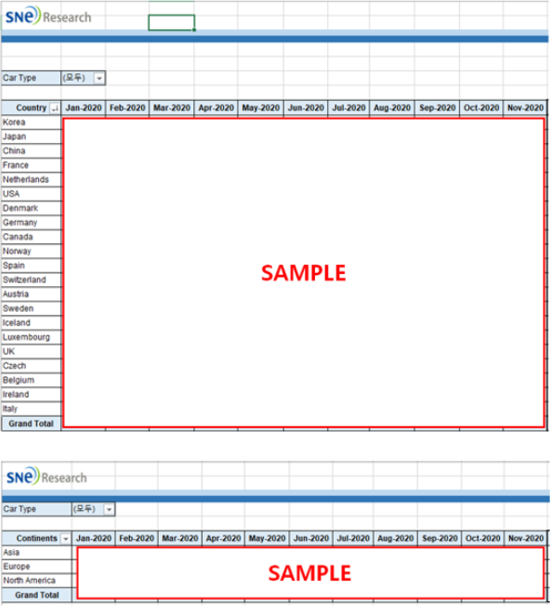
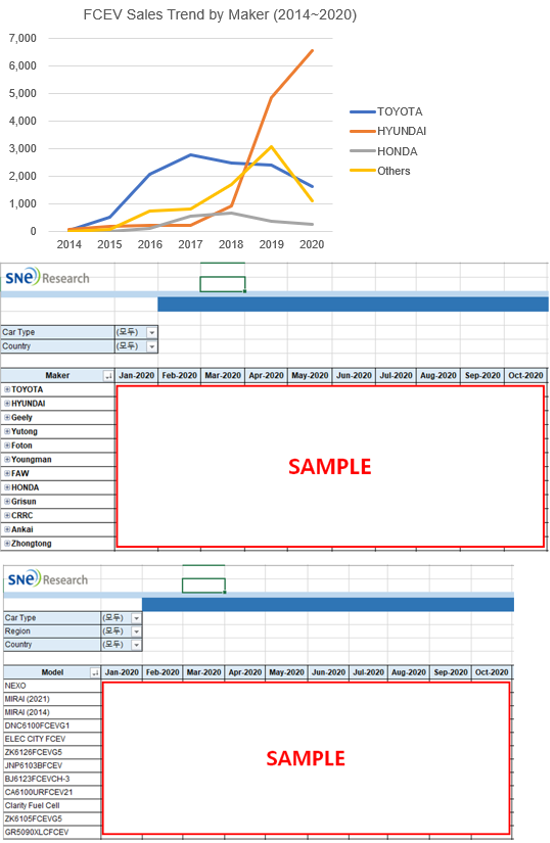
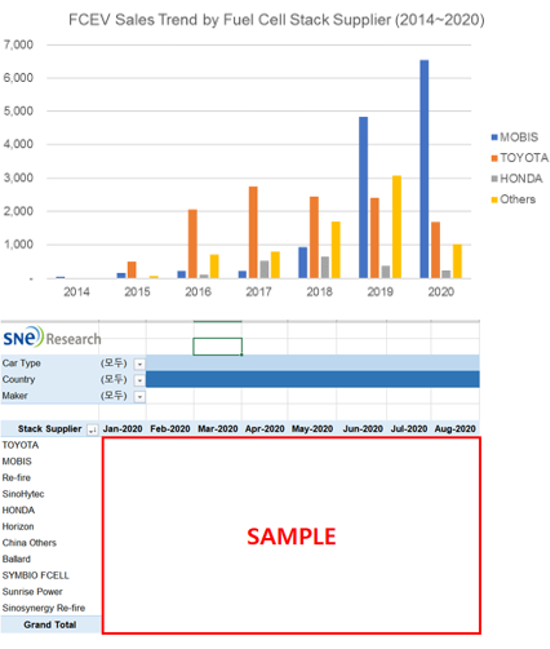
2. Fuel Cell Stack Capacity (kw) by FCEV models
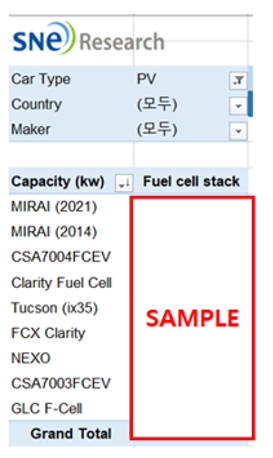
3. Monthly Battery Installation Trend of FCEV - Battery Supplier, Battery Type, Battery Chemical
